Users and authentication
The concept of "Users" in this section refers to creating distinct access credentials (or service accounts) for different operational purposes, such as for a monitoring dashboard with view-only permissions or an operator interface that can start and stop applications.
An AICA System License is a single-user license intended for one primary developer. The platform does not currently support live, simultaneous collaboration with other developers on the same system instance.
Authentication prevents unauthorized users or software clients from accessing or controlling a running instance of the AICA System through AICA Studio or the API, even if they have access to the IP address and port of the AICA Core server.
The user launching an AICA System configuration from AICA Launcher is treated as the system administrator and has full access to create, manage, control and deploy applications and configurations.
This section describes how to manage users with specific access scopes to explicitly authorize access to the running AICA System through a web browser or API client.
User roles and access scopes for authentication in AICA Studio and the API were introduced in AICA Core v4.3.0.
System administration privileges and API authentication are supported by AICA Launcher as of v1.2.0 and the Python API Client as of v3.1.0. Upgrade to the latest versions of these tools for full compatibility.
Users
When using AICA Launcher as the system administrator, AICA Studio is automatically logged in as the privileged
super-admin user.
The system administrator (or a user with the admin scope) has access to a settings page within AICA Studio to
configure cloud service integration and manage or create other users. Users are created using an email address as the
identifier and can be granted a combination of scopes.
The email address used to create a new user is only used as an identifier and is unrelated to the email address used for licensing. Users are defined locally to a specific AICA System Configuration, and access scopes or passwords are not inferred or shared between different configurations, even if the same email address is used.
To create a new user, click on the New User button in the Settings page, provide an email address and the desired scopes.
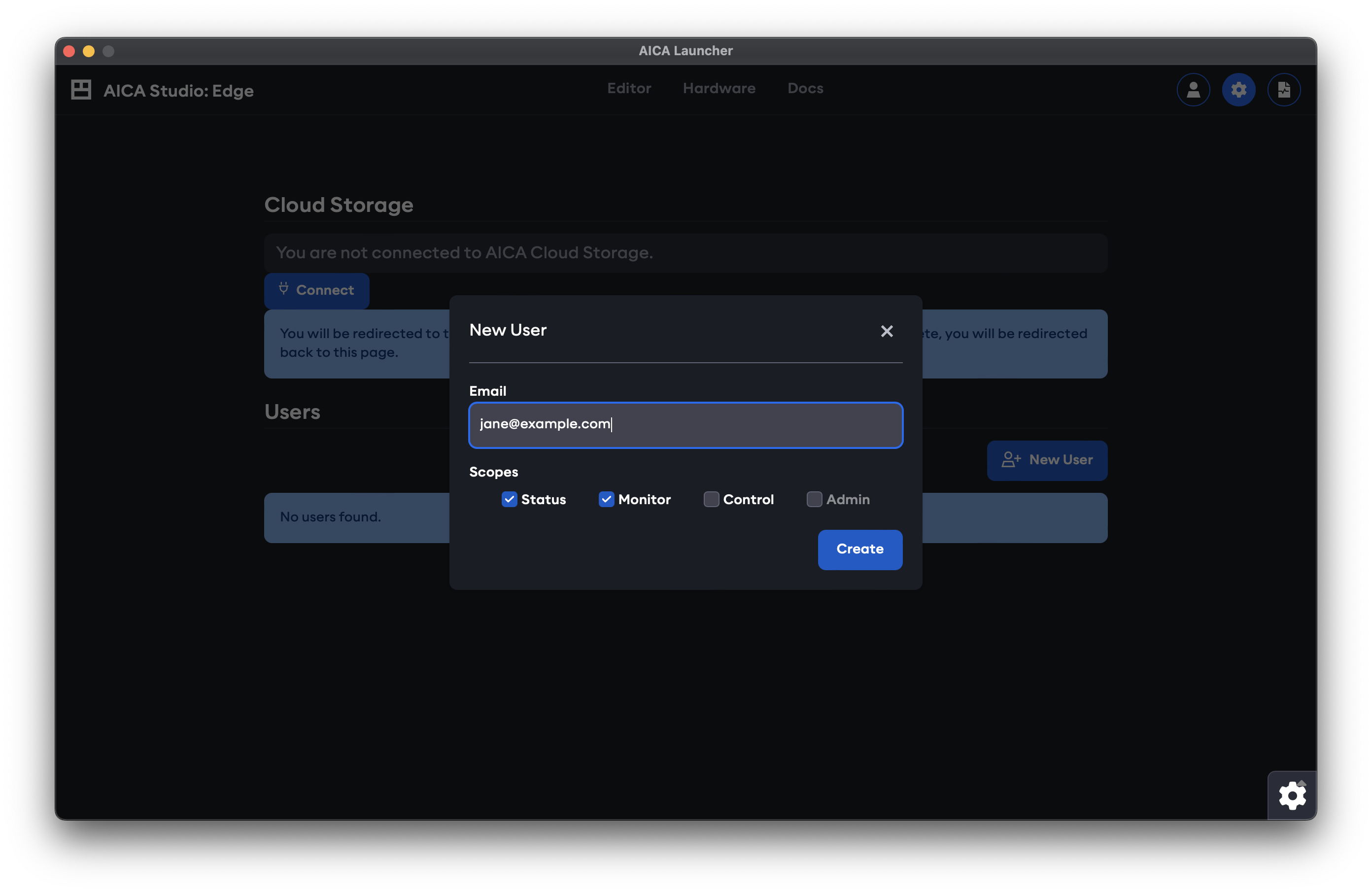
A random password is generated for the newly created user. It is only shown once, so it should be copied and stored for later use. If the password needs to be changed, first log out from the User page (or open AICA Studio in a new browser session), and log in as the new user with the generated password. Then, change the password in the User page by entering the generated (old) and the desired (new) password.
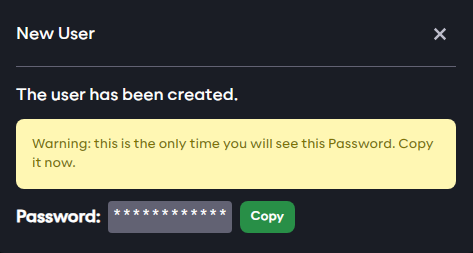
If AICA Studio is accessed from a web browser, or if the user logs out of the current AICA Studio session, a valid user email and password must be supplied to log in to AICA Studio.
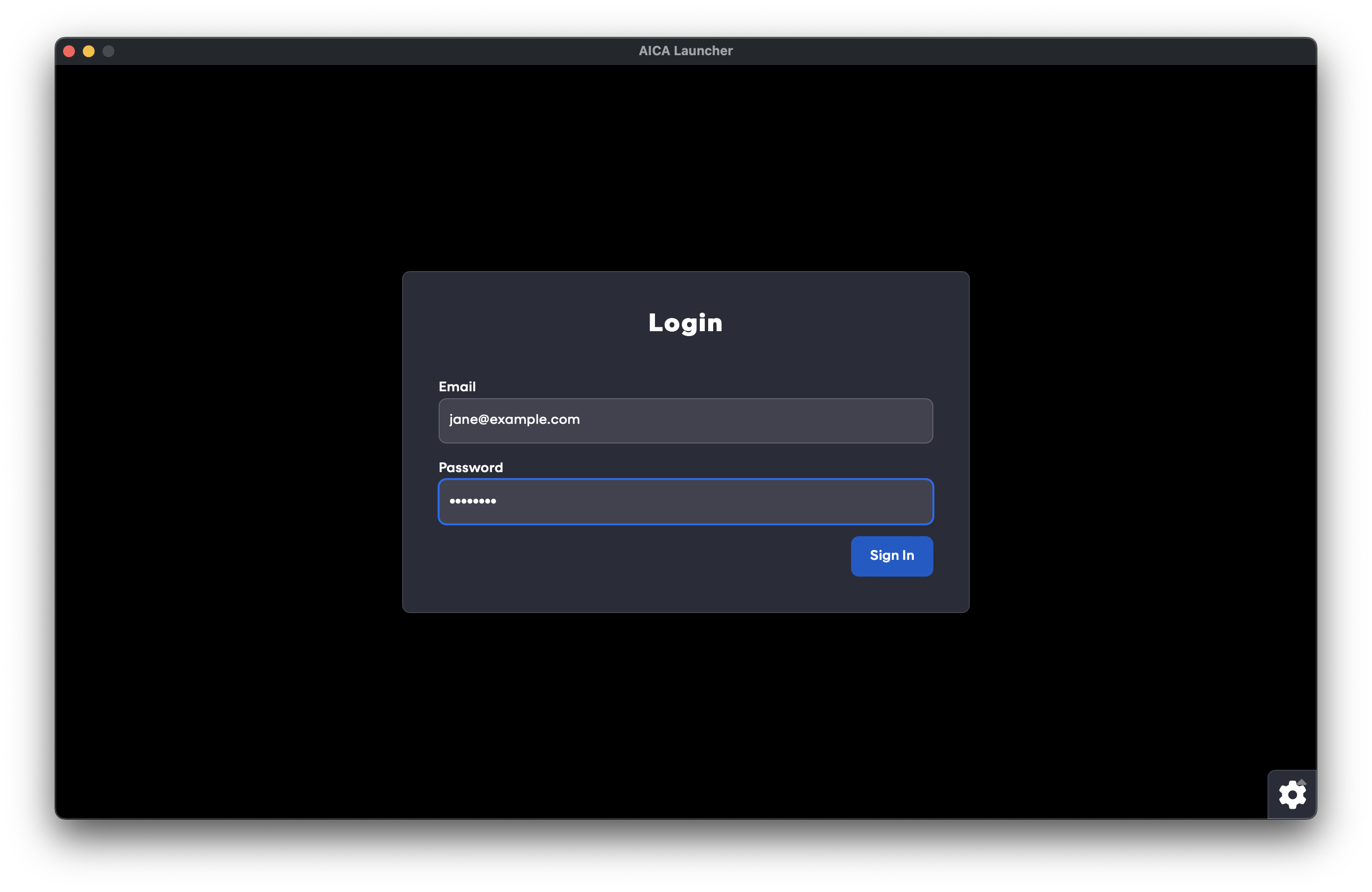
The User page in AICA Studio can be used to view the current user with their available scopes, change the password or create API keys.
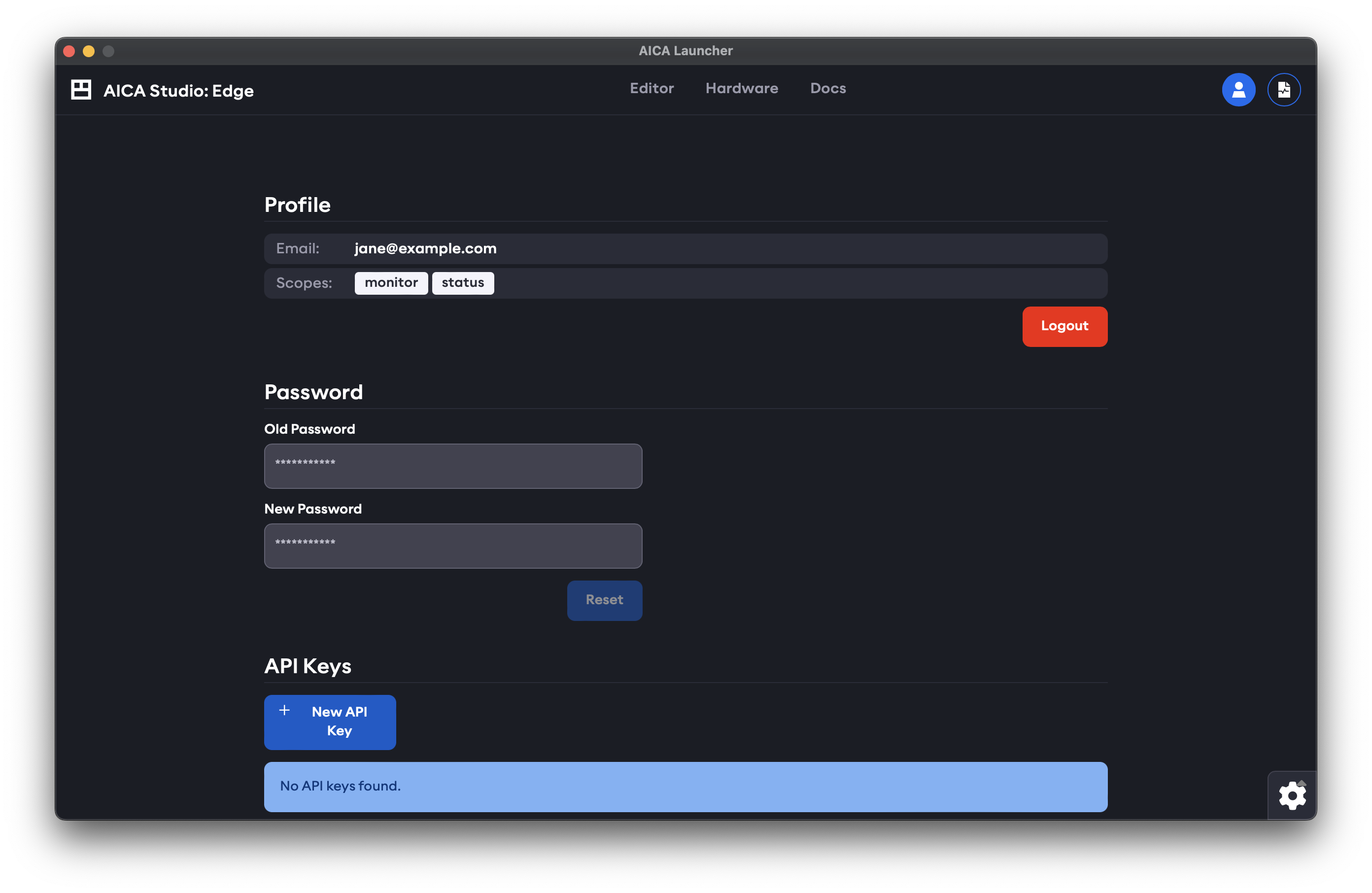
API Keys
Other than accessing AICA Studio through a browser, users or software clients can interact with the AICA System using the API. For AICA Core v4.3.0 and later, an API key is required for authentication. This can be generated in the User page in AICA Studio, by clicking on the New API Key button. Provide a name and the desired scopes - note that these cannot surpass the scope of the logged-in user.
For security reasons, the default super-admin user cannot be used to create or manage API keys. Create a new user
with the necessary scopes before creating an API key as that user.
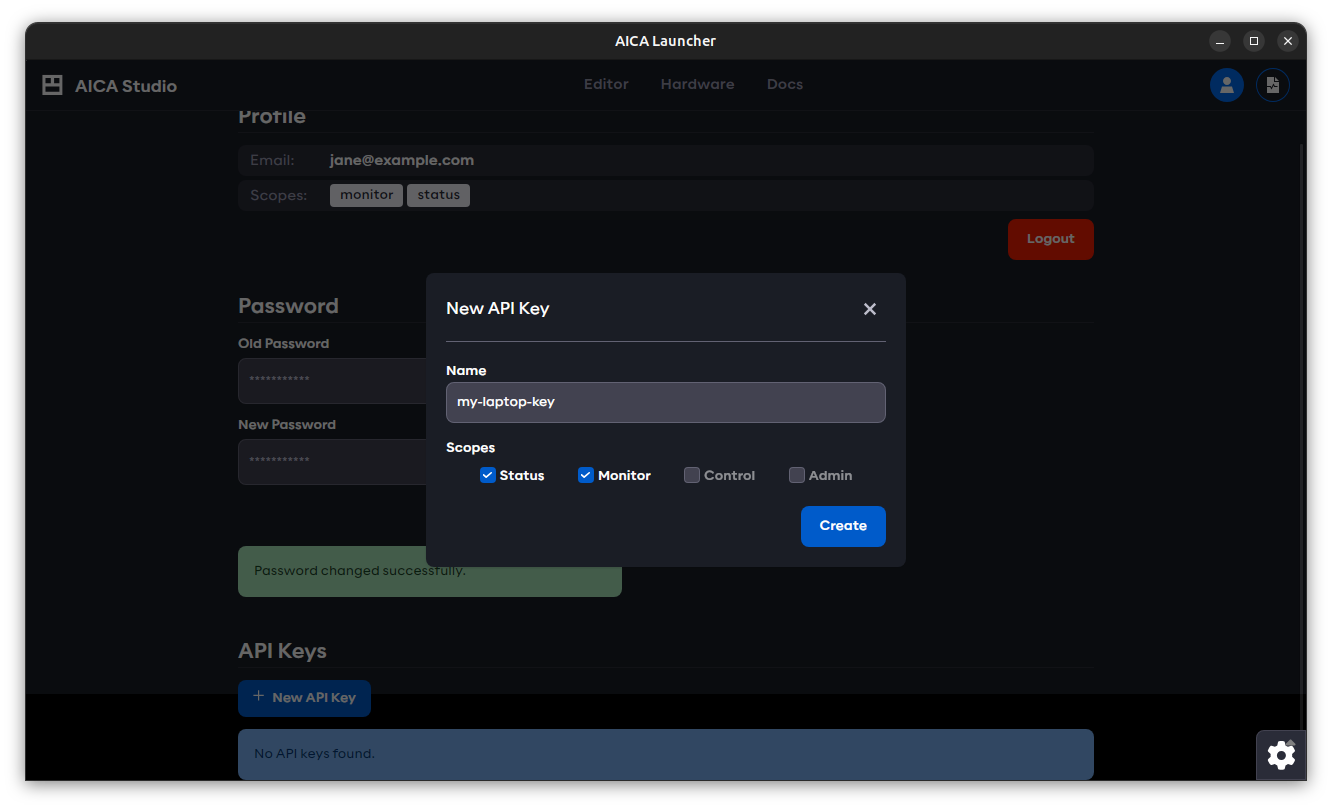
As was the case with the new user password, the newly created key should be copied and saved in a secure place, as it cannot be accessed later. It can then be used it to authenticate and access AICA Core through the API.
If an API key is lost or compromised, delete it from the Users page and generate a new one.
Refer to our API client documentation for more info on the usage of API keys.
Scopes
AICA Studio may have different or limited functionality depending on the scopes granted to the logged-in user. Similarly, an API key with appropriate scopes is required to access respective endpoints and functionalities of the API. The available levels of scopes are described below.
status
Read-only access to high-level information about the AICA System such as the available installed features.
monitor
Read-only access to specific information about the AICA System such as configuration database entries or the state and live telemetry of running applications.
control
Write-level access to configuration databases and control-level access to set, start and manage running applications.
admin
Administration access to manage and create users and authorize cloud service integrations.